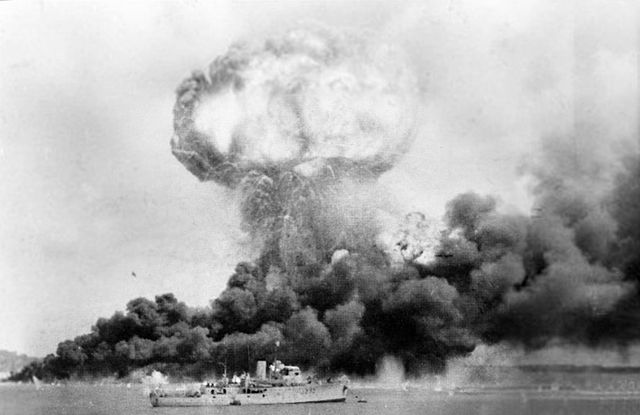The Bombing of Darwin, also known as the Battle of Darwin, on 19 February 1942 was the largest single attack ever mounted by a foreign power on Australia. On that day, 242 Japanese aircraft, in two separate raids, attacked the town, ships in Darwin Harbour and the town's two airfields in an attempt to prevent the Allies from using them as bases to contest the invasion of Timor and Java during World War II.
The explosion of MV Neptuna, filled with TNT and ammunition, hit during the first Japanese air raid on Australia's mainland, at Darwin on 19 February 1942. In the foreground is HMAS Deloraine, which escaped damage.
An aerial photograph of vessels burning in Darwin Harbour taken by a Japanese airman during the first raid.
A downed USAAF P-40E
MV Neptuna explodes at Stokes Hill Wharf. In front of the explosion is HMAS Vigilant which is undertaking rescue work. In the centre background is the floating dry dock holding the corvette HMAS Katoomba. In the foreground is the damaged SS Zealandia.
Darwin Harbour is a body of water close to the city of Darwin in the Northern Territory of Australia. It is the traditional waterways of the Larrakia people.
Looking towards the city over Darwin Harbour
A sunken ship (MV Neptuna) and burnt-out wharf in Darwin Harbour following the attack on Darwin (AWM 027334)
The Elizabeth River Bridge across Elizabeth River, upstream the East Arm of Darwin Harbour







